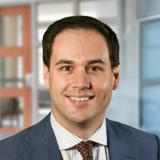“Well, this is embarrassing,” the woman says with a smile. Her crow’s feet crinkle as she tucks a strand of silver hair behind her ear. She shifts on the exam table, the paper rustling underneath her. She meets my eyes with a mournful expression. “I leak.”
I sit up a little straighter on my stool and nod. As a urologist, this is well within my wheelhouse. “We can help you with that,” I reassure her. “What are you doing when you leak?”
She shakes her head slightly, as if to downplay her symptoms. “Oh, I’m just trying to get to the bathroom. I feel the urge to go, and it just runs out. I have to live in diapers. It’s so embarrassing! I can’t even have lunch with my girlfriends. I’m so ashamed.” She hangs her head. “I have no life because of my bladder.”
I feel a slight ache in my chest. I’ve heard this story before. I nod slightly and ask, “Have you ever been treated for this with medication?”
She looks back at me with a hopeful expression and nods her head. “Another doctor gave me samples of a bladder pill that worked wonders for me. I was able to go out, grocery shop, and see my friends. But my insurance company wouldn’t approve it. They only approved a medicine that gave me horrible dry mouth. So I quit trying to find relief. I figured I’d just deal with it. Until it became unbearable, at least. So here I am. Can you help me? I can’t live like this.”
A fire runs through me at this revelation. This lovely woman is yet another victim of our unjust health care system.
Overactive bladder (OAB) affects 1 in 7 adults. The syndrome is characterized by urinary urgency, with or without frequency, nighttime voids (also known as nocturia), and leakage. OAB occurs more frequently with aging and with certain medical conditions, such as diabetes, obesity, Alzheimer’s dementia, and Parkinson disease.
Our population is rapidly aging. Over the last 50 years, life expectancy has continued to rise for both men and women. With aging comes chronic diseases, such as those associated with OAB. Thus, we continue to see older, sicker patients, who are increasingly in diapers or have their lives dictated by where the restrooms are, who don’t even want to leave the house due to their embarrassment and shame, and who may even have nighttime falls and subsequent morbidity due to nocturia.
Classic treatment for OAB includes a class of medication called antimuscarinics, which block the binding of acetylcholine to the smooth muscle layer of the bladder wall, known as the detrusor muscle. As a result, the bladder is able to relax and store urine for longer periods of time, with the goal of less frequency, urgency, and leakage. Antimuscarinics have been utilized for decades and can be quite effective in improving OAB symptoms, but recent studies have revealed a link between antimuscarinics and the development of cognitive dysfunction and even dementia.
Beta agonists have recently been marketed as an alternative to antimuscarinics. They bind to beta receptors on the detrusor to achieve a similar relaxing effect and appear to be better tolerated. They are also quite effective, and patients tend to do well with them. In other words, they are superior in both efficacy and side effect profile.
However, physicians often run into roadblocks when prescribing beta agonists due to poor prescription drug coverage. These drugs are not off patent yet, which limits their financial availability on many insurance plans. Most patients simply cannot afford them if they are not on their insurance plan’s formulary.
When there are noninferior and better tolerated treatments available, it is unconscionable that the pharmaceutical and insurance industries allow this to occur. As a urologist, I may have a selection bias regarding OAB prevalence and treatment, but I have witnessed first-hand over my years of practice exactly how widespread OAB is. And it is likely underreported due to factors such as embarrassment or lack of time at primary care appointments.
The American health care industry seems irreparably broken, with hundreds of medications being unaffordable, but this is one area in which people are actively being mistreated by forces beyond doctors’ control. Doctors know which drugs are better, but they cannot prescribe them. Not only is this harmful to the American people who need medications, but it is breaking the spirit of clinicians in all specialties.
Both patients and clinicians need to understand exactly how the insurance and pharmaceutical industries are dictating our care. They are not acting in society’s best interest, but rather they are maximizing their own profit margins by cutting their own costs. It is abhorrent and abysmal that insurance and pharmaceutical companies will deny Americans the ability to take safe medications for a common problem that significantly affects quality of life.
There are multiple solutions to this problem. Perhaps most saliently, our state governments need to continue to take action against pharmacy benefit managers such as CVS Caremark, Express Scripts, and OptumRx. PBMs are often described as the “middleman” between pharmacies and insurance companies, and, to date, they have captured nearly 80% of the prescription benefits market in the U.S. While PBMs advertise themselves as cost savers, they are truthfully cost multipliers by self-profiting from nearly every step in the drug distribution process. They develop their formularies in order to maximize their own profits and overcharge patients to pocket the “spread,” which is the difference between dollars spent on drugs and dollars reimbursed to pharmacies. States are beginning to litigate against PBMs as well as introduce legislation to eliminate their stronghold, but more need to follow suit. Arkansas in particular recently introduced legislation banning PBMs from owning their own pharmacies.
Other viable solutions include eliminating drug patents, allowing Medicare to negotiate drug prices, and capping drug costs. Ideally, such measures would result in lower out-of-pocket costs for our patients and would expand the breadth of available medications through drug discount programs such as GoodRx and Mark Cuban’s Cost Plus Drug Company.
We are slowly being beaten down by external factors that compromise our ability to provide quality effective care to our patients. This is death by a thousand cuts. We took an oath to do no harm. By prescribing old drugs that have been shown to hurt people, this is inconsistent with our promise. Our health care system needs to allow us to practice safe effective medicine, for our own sakes, but most importantly, for our patients.
How are you treating patients with overactive bladder? Share in the comments.
Dr. Fara Bellows is a general urologist in White Plains, New York. She can be found on TikTok @FaraBellowsMD.
Image by Alphavector / Shutterstock







